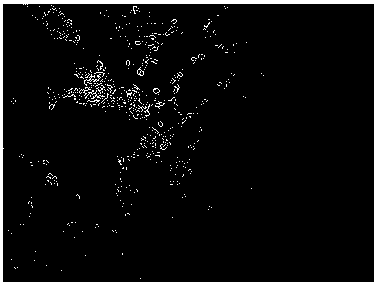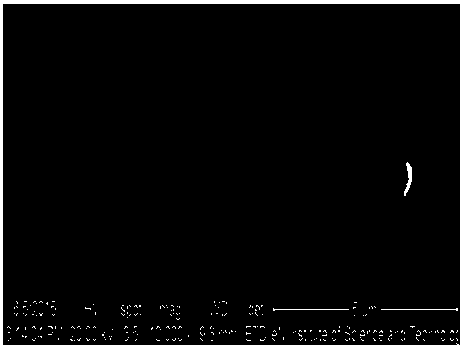An endophytic bacterium gj-06 of the mustard root nodule, a clubroot control agent containing the endophytic bacterium, and its application
A technology of GJ-06 and endophytic bacteria, applied in the field of endophytic bacteria, can solve the problems of exacerbation of clubroot, imbalance of soil microbial ecosystem, increase of soil-borne diseases, etc., achieve good inhibition effect, good stability, and slow down the disease degree of effect
- Summary
- Abstract
- Description
- Claims
- Application Information
AI Technical Summary
Problems solved by technology
Method used
Image
Examples
Embodiment 1
[0018] Isolation of endophytic bacteria from the root of Stem mustard:
[0019] Disinfect the surface of root knots and healthy roots produced by clubroot of the stem tuber mustard (Yongan lobularis), grind them into a slurry in a sterile mortar, and spread it on an NA plate (beef extract 3 g / L, peptone 2.5 g / L L, glucose 5 g / L, agar 16 g / L.), after culturing at 37°C for 48 h, pick bacterial colonies, purify, and set aside.
[0020] The isolated root nodule endophytic bacteria were preliminarily identified by colony morphology and Gram staining, and a total of 8 strains of endophytic bacteria were obtained, and the preliminary labels were GJ-01, GJ-02, GJ-03, GJ-04, GJ-05 , GJ-06, GJ-07, and GJ-08 were cultured in NA medium for liquid fermentation at 37°C for 12 h, and were used for subsequent experiments, with clean water as the control (CK).
Embodiment 2
[0022] Identification of endophytic bacteria:
[0023] Primers (16S-F: agagtttgatcctggctcag, 16S-R: tacggctaccttgttacgactt) were designed with the bacterial universal primer 16SrDNA sequence, using the PCR method (95°C, 5min; 95°C, 30s, 55°C, 30s, 72°C, 1min30s, 32cycle; 72 ℃, 10min; 12℃, forever) to amplify the 16SrDNA sequence of the GJ-06 strain, transform the amplified sequence into Escherichia coli competent cells, pick positive clones for sequencing, and compare and analyze in NCBI to determine their taxonomic status; the results show that GJ- 06 was 100% consistent with the 16S rDNA sequence of Bacteria, Firmicutes, Bacillus, Bacillus, Bacillus, and Bacillus, indicating that the bacteria belonged to Bacillus subtilis.
[0024] The GJ-06 strain was characterized by a high-power microscope (10 times the eyepiece, 100 times the objective lens, and 1000 times the magnification) and a scanning electron microscope to analyze its morphological characteristics and determine the...
Embodiment 3
[0026] Analysis of resistance of endophytic bacteria to clubroot in mustard mustard:
[0027] Select the stem mustard plots with severe clubroot disease to carry out, and when transplanting, cut the roots of the stem mustard seedlings,
[0028] Eight kinds of bacterial strain suspensions (1×10 9 cfu mL -1 ) were added water to 500mL and mixed evenly, and each treatment of 100 roots was carried out, and the operation was repeated 3 times. With clear water as the blank control, the plots are randomly arranged, and the management is the same as that of ordinary fields. The field disease rate and disease index were investigated in the treatment area and the control area respectively, and the control effect of the strains in the treatment area was calculated.
[0029] The severity of clubroot mustard disease is graded as 5 grades, and the standards are (Gao Mingquan, 2012):
[0030] Grade 0: Healthy plants.
[0031] Grade 1: Lateral root disease, small and few tumors, white i...
PUM
 Login to View More
Login to View More Abstract
Description
Claims
Application Information
 Login to View More
Login to View More - R&D
- Intellectual Property
- Life Sciences
- Materials
- Tech Scout
- Unparalleled Data Quality
- Higher Quality Content
- 60% Fewer Hallucinations
Browse by: Latest US Patents, China's latest patents, Technical Efficacy Thesaurus, Application Domain, Technology Topic, Popular Technical Reports.
© 2025 PatSnap. All rights reserved.Legal|Privacy policy|Modern Slavery Act Transparency Statement|Sitemap|About US| Contact US: help@patsnap.com



